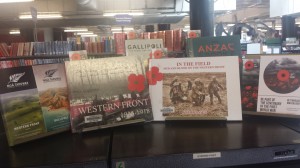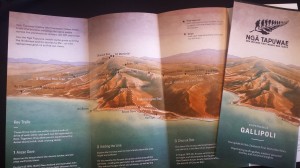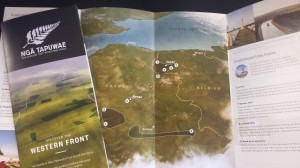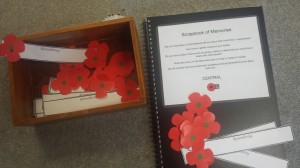This year New Zealand commemorates the 100th ANZAC day since the first service in 1916. At the first service the Gallipoli campaign was fresh in everyone’s minds as per this quote from the ww100 website but attention was soon to turn to the Western Front.
April this year marks the centenary of Anzac Day itself – a commemoration first held on 25 April 1916. Those first services naturally looked back to the previous year’s Gallipoli campaign, where most of New Zealand’s war dead up to that date had fallen. The nation’s attention, though, was soon to pivot to a new theatre of war. Earlier that month the New Zealand Division had arrived in France, about to embark on a brutal two-and-a-half-year struggle on the Western Front – a campaign of much greater significance and one that would claim almost five times as many New Zealand lives as Gallipoli. Over the following decades Anzac Day would come to embrace New Zealanders’ service and losses during the Second World War, Korea, Vietnam and many other conflicts – yet a century on it remains closely linked to its Gallipoli origins
The Anzac Day library display on the 2nd floor of the Central library this year features the brochures of the WW100 website and the Ngā Tapuwae trails from two theaters of war.
Ngā Tapuwae New Zealand First World War Trails is a WW100 legacy project that guides people through historic landscapes and sites of the First World War. These trails can be experienced in three ways. You can download the smartphone or tablet app, explore the trails on your computer, or print off the paper guides. They can be used as a self tour of the actual area or as a virtual online tour.
Ngā Tapuwae Gallipoli
On 25 April 1915, thousands of New Zealand men landed on the Gallipoli Peninsula. For eight long months, New Zealand troops, alongside those from Australia, Great Britain and Ireland, France, India, and Newfoundland battled harsh conditions and Ottoman forces desperately fighting to protect their homeland. Ngā Tapuwae Gallipoli guides you through five trails. Three key trails around Anzac Cove tell the essential Anzac story and include the Anzac landing, Quinn’s Post and Chunuk Bair, while two longer driving trails slightly further out on the Gallipoli peninsula cover the battles at Cape Helles and Hill 60.
Ngā Tapuwae Western Front guides you through ten trails located in France, Belgium and the United Kingdom. The five trails in Belgium focus on the battlefields around Passchendaele and Messines, the four trails in France explore the famous Arras tunnels and Somme battlefields, and the trail in the United Kingdom lets you discover the former hospital grounds at Brockenhurst. After their evacuation from Gallipoli, New Zealand troops were sent to the Western Front. They were there from 1916 until after the end of the war, most returning home in 1919. The Gallipoli campaign and the birth of the Anzac legend have captured the imagination of generations of New Zealanders. But it is on the Western Front where they experienced their most devastating losses.
The other part of the Anzac Day display features a remembrance wall where you can leave a poppy with the name of one of your relatives or someone you want to remember who has served in the armed forces. Just ask at the second floor desk for a poppy and tag.
There is also a scrapbook of memories by the display where you can write down any family members World War one experiences that you may wish to share.






